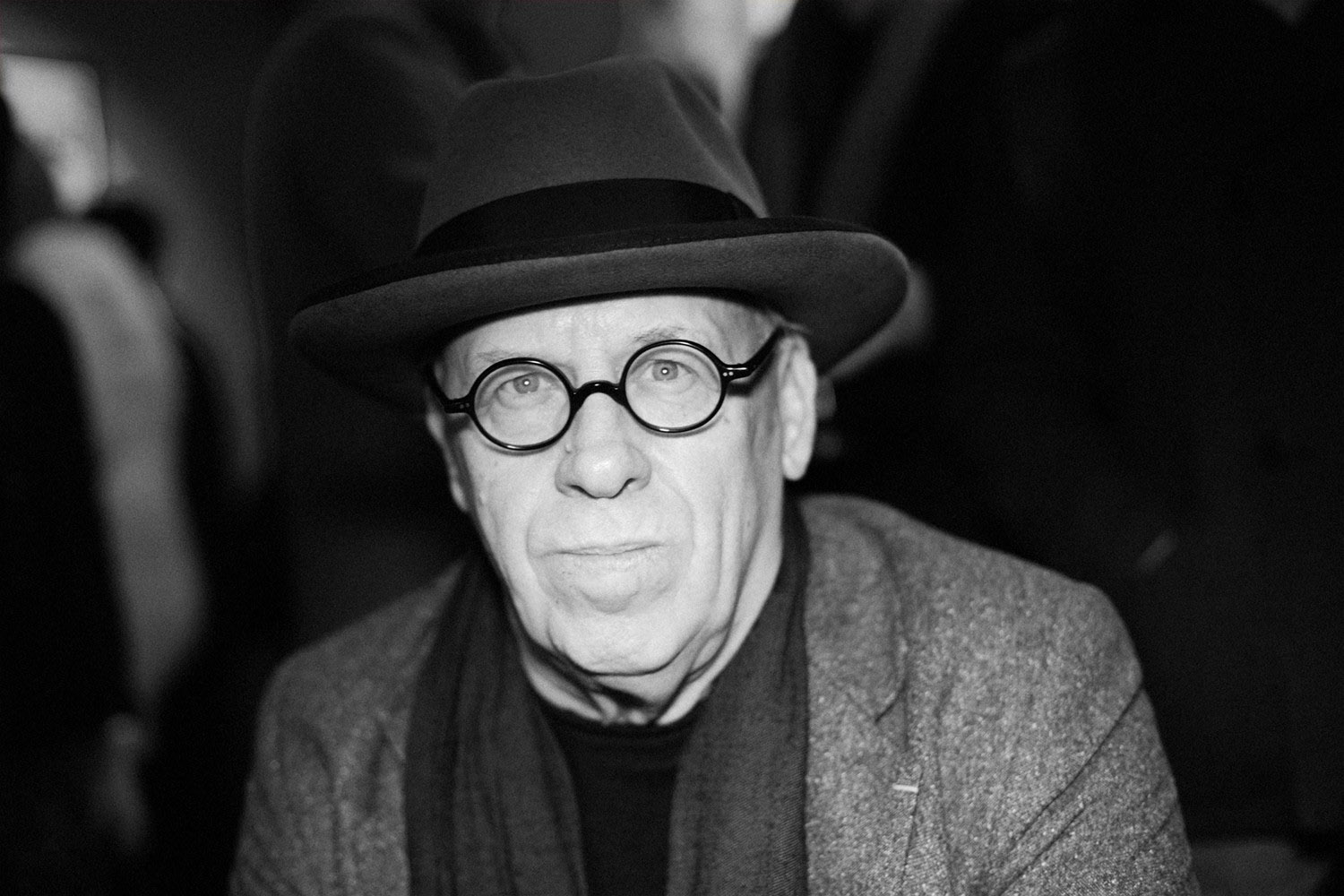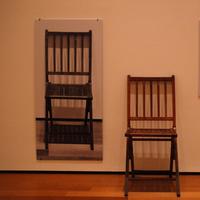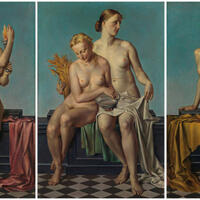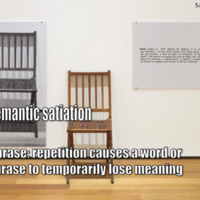More about Joseph Kosuth
Works by Joseph Kosuth

Sr. Editor
Joseph Kosuth is an American artist best known for his contribution to the Conceptual art movement. Conceptual art is any piece where the…you guessed it; concept is the most important part. So don’t expect to see too many pretty paintings from this guy. He’s an idea man, more interested in challenging the definition of “Art” with a capital A.
Quite the intellectual, many of his pieces are inspired by philosophy. Specifically, he probes us to think about the way in which language informs our way of understanding the world. His installations point out the self-referential nature of language, often consisting of only what the title promises. For example, one of his pieces is simply a photographic enlargement of the dictionary definition for “definition.” Very meta.

Contributor
As a pioneer of conceptual art, Joseph Kosuth prioritizes the idea behind an artwork above what it looks like.
If you are looking for lavishly painted landscapes, Joseph Kosuth isn’t your guy. If you’re interested in artworks that give you something to think about long after you’ve seen them in a museum, you’ll probably like his work, which was influenced by famous philosopher Ludwig Wittgenstein and psychoanalyst Sigmund Freud. As is the custom in conceptual art, Joseph Kosuth’s works are supposed to celebrate ideas rather than playful brushstrokes or the fascinating material of a sculpture. His pieces are often self-reflexive and discuss themes like language, context, and meaning.
Joseph Kosuth’s conceptual art is reflective of his extensive education. He not only attended the Toledo Museum School of Design, the Cleveland Art Institute, and the School of Visual Arts in New York, but he also studied Anthropology and Philosophy. The artist spent a year in Paris and traveled throughout Europe and North Africa before he moved to New York. When he was in Paris, he had dinner with the famous existentialists Jean-Paul Sartre and Simone de Beauvoir. Kosuth said that he wanted to expand his cultural point of view which he described as that of a “white, male, Eurocentric artist." He lived with the Yagua – an indigenous people in the Peruvian Amazon – and went on a solo trip around the world which also brought him to Australia, where he camped with Aboriginal people.
In 1965, Joseph Kosuth created his most well-known work One and Three Chairs. It consists of an actual chair, a photograph of the chair, and a dictionary definition of the word “chair.” Like in many of his other works, this grouping questions the relationship between the object, its visual depiction, and its written description. Kosuth created different versions of this piece with objects such as a lamp, a shovel, and a hammer. If this reminds you of Marcel Duchamp’s infamous exhibition of a signed urinal, it’s not a coincidence. Kosuth referenced Duchamp’s use of ordinary objects, also called ready-mades, in his essay “Art After Philosophy." He wrote that Duchamp can be credited “with giving art its own identity” and that every piece of art that came after Duchamp is conceptual in nature, since that is now the only way art exists.
Sources
- Chilvers, Ian, and John Glaves-Smith. "Kosuth, Joseph." In A Dictionary of Modern and Contemporary Art: Oxford University Press, https://www.oxfordreference.com/view/10.1093/acref/9780191792229.001.00….
- Corris, Michael. “Joseph Kosuth.” In Art: Key Contemporary Thinkers, edited by Jonathan Vickery and Diarmuid Costello, 21-23. Oxford: Berg, 2007.
- Guggenheim. “Joseph Kosuth.” Accessed July 16, 2022. https://www.guggenheim.org/artwork/artist/joseph-kosuth.
- Kosuth, Joseph, Art After Philosophy and After: Collected Writings, 1966-1990. Cambridge/London: The MIT Press, 1991.
- Kosuth, Joseph. “The Material of Meaning: Illuminating the Art of Joseph Kosuth.” Interview by Natalie King. Art and Australia 47, no. 4 (Winter 2010): 590-595.
- MoMA. “Joseph Kosuth One and Three Chairs 1965.” Accessed July 16, 2022. https://www.moma.org/collection/works/81435?artist_id=3228&page=1&sov_r….
- Morgan, Ann Lee. "Kosuth, Joseph." In The Oxford Dictionary of American Art and Artists: Oxford University Press, https://www.oxfordreference.com/view/10.1093/acref/9780191807671.001.00….
Featured Content
Here is what Wikipedia says about Joseph Kosuth
Joseph Kosuth (/kəˈsuːt, -ˈsuːθ/; born January 31, 1945) is an American conceptual artist, who lives in New York and London, after having resided in various cities in Europe, including Ghent and Rome.

Check out the full Wikipedia article about Joseph Kosuth













